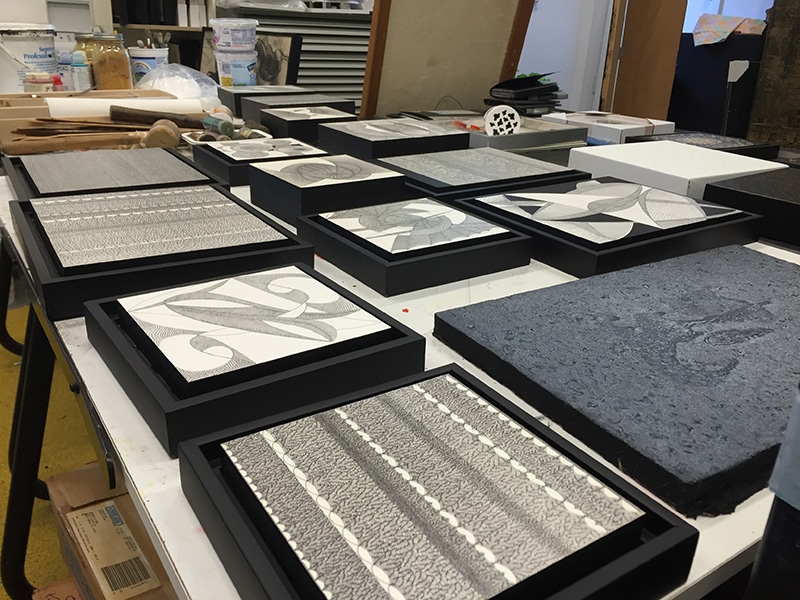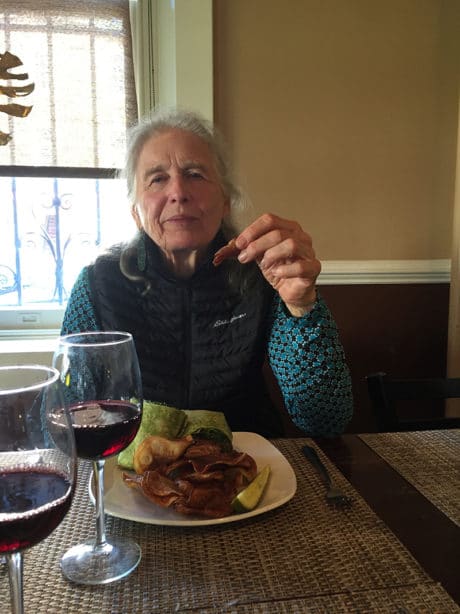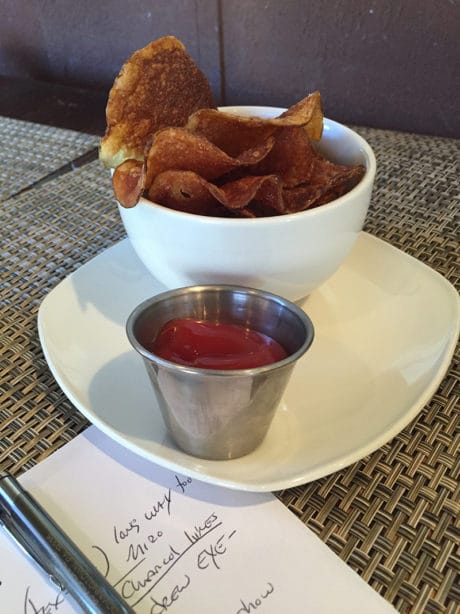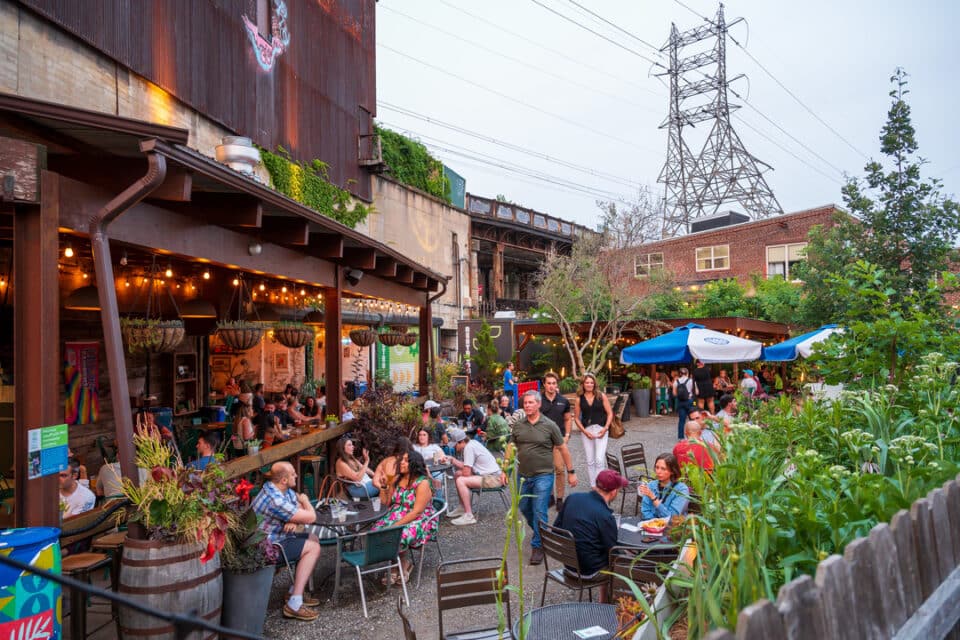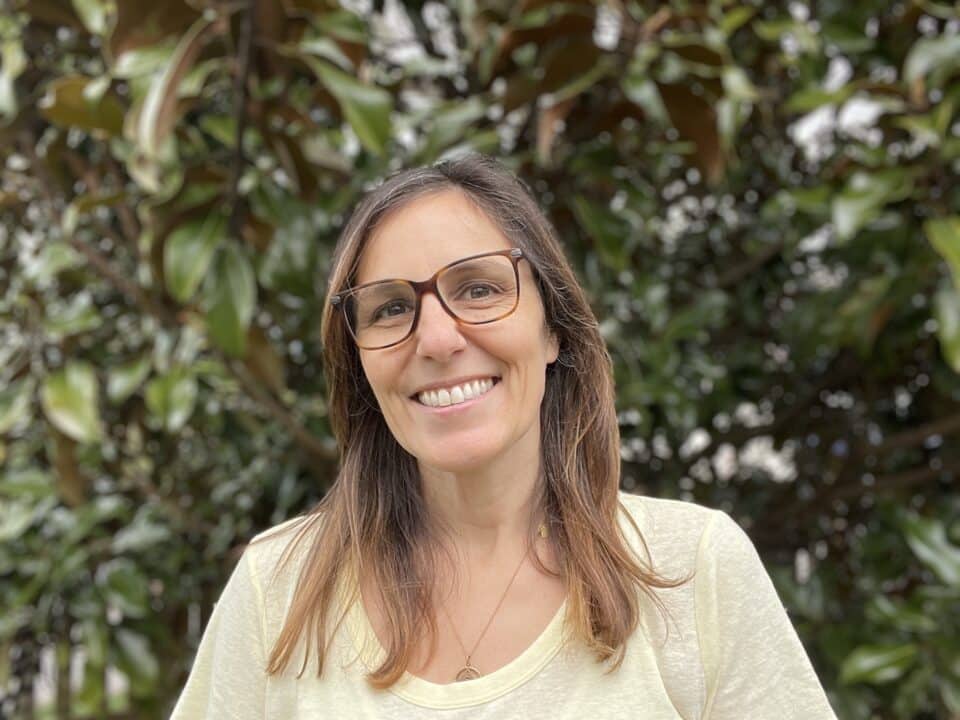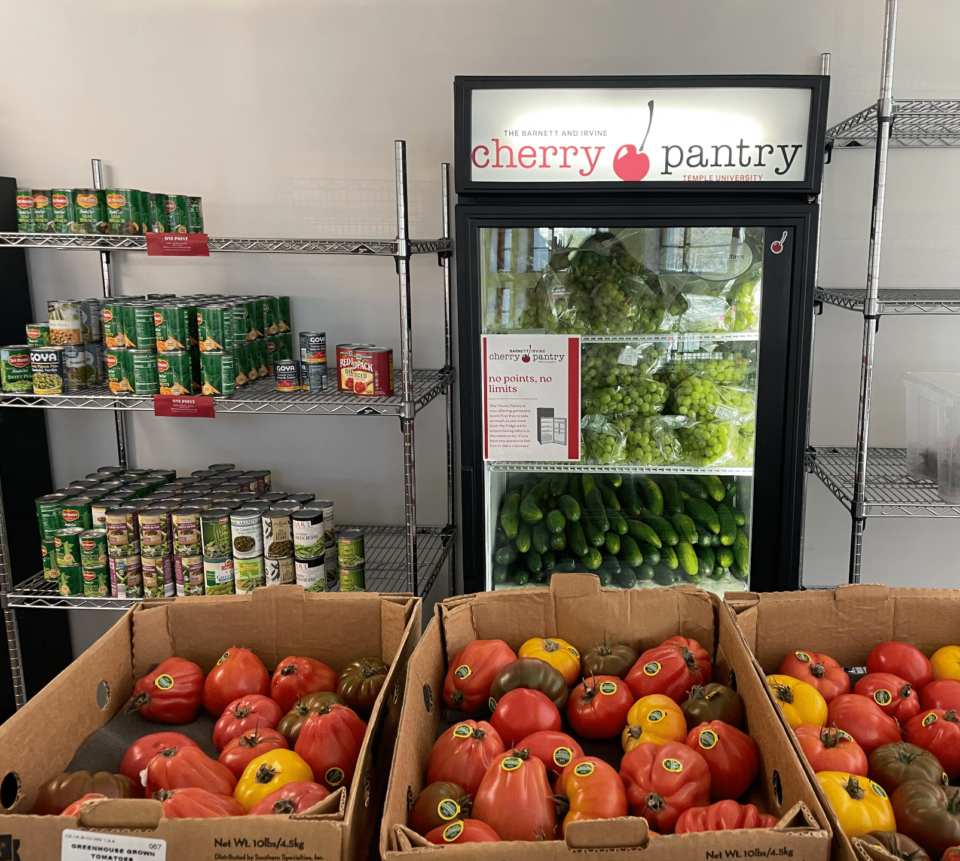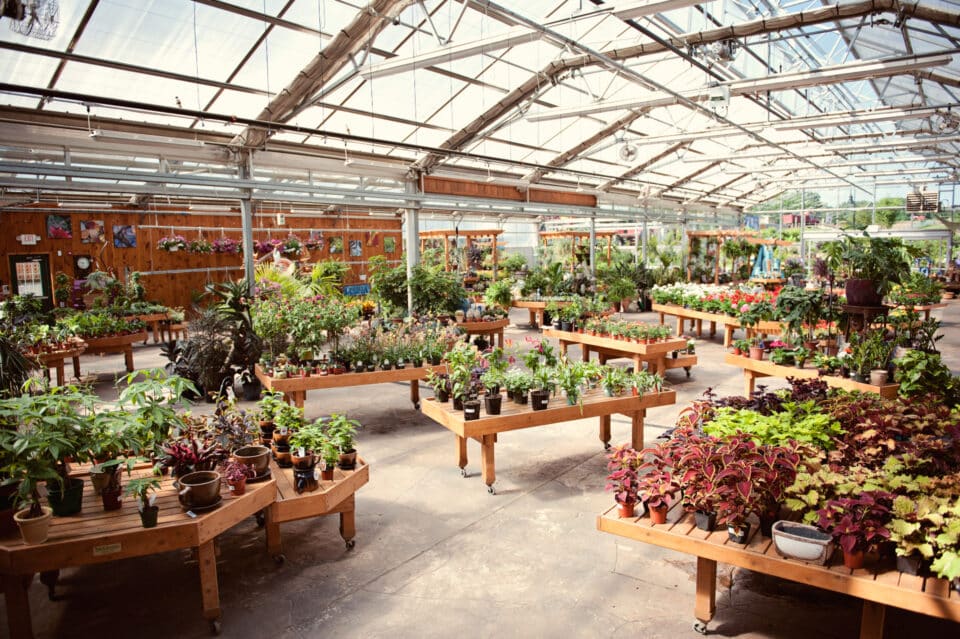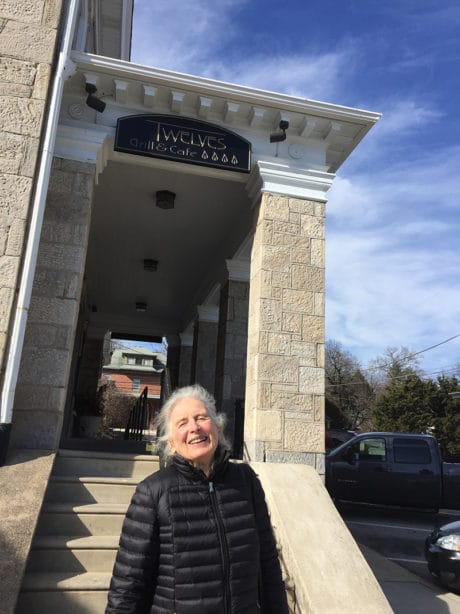 I had no idea what I was getting myself into when I sat down at Twelves Grill & Cafe in West Grove to interview artist Margo Allman. Truthfully, I don’t think she had any idea either. This was all new to her and a walk down memory lane for me. I found myself looking at a beautiful woman in body and soul who reminded me of my grandmother both in age and spirit. (We did the math and confirmed she could be my grandmother.)
I had no idea what I was getting myself into when I sat down at Twelves Grill & Cafe in West Grove to interview artist Margo Allman. Truthfully, I don’t think she had any idea either. This was all new to her and a walk down memory lane for me. I found myself looking at a beautiful woman in body and soul who reminded me of my grandmother both in age and spirit. (We did the math and confirmed she could be my grandmother.)
The first time I met Margo was at the Art Trust Gallery, the bank-by-day/gallery-by-night in West Chester. She was an artist selected for the “Contrast” show of black-and-white images by local artists. I was ecstatic to meet her, as I had heard so much about her work and her accomplishments. I had seen her layered ovals that you could almost dive into because of the three-dimensional space created. I postured myself to make an introduction. I had my opportunity to catch her historic blue eyes and graciously say, “Hello.” We chatted about the show and her artwork when I decide to go for it … Would you like to do lunch and an interview, blah, blah, blah, blah … I’ll buy you lunch and bring a bottle of wine. She quickly said yes. I whipped out my iPhone, scanned my thumb, swiped to iCalendar and asked, “What day works for you?” She looked up and said, “Oh I don’t do that computer stuff.” I quietly put down my convenient machine of modern technology. She asked for my phone number and decided it was best if she called me. I was channeling my grandmother.
We met at Twelves, which ironically is a restaurant that was a bank and is now a restaurant. It seemed like everything was coming full circle. I was excited yet nervous but no worries—I had brought wine to this little BYOB nestled in the heart of West Grove.
I poured the wine, toasted my guest and asked the first question. Margo closed her eyes and opened up her life to me. Her answers were thoughtful, poetic and meaningful. The answers weren’t something you could tweet, post or snap a picture of. This was a conversation. I walked with her through a history that touched fame, personal conquests, humility, love and mortality. I asked one question and felt like I was part of a movie.
PA Eats: When did you know you wanted to be an artist?
Margo Allman: When I was in my second year at Smith College, I was in the library. I had planned to be a scientist, actually a biochemist. I was not particularly happy at Smith College. I had played around with art. It was something I did when I got through with all my homework and all the other things I had to do. I just happened to pick up a book in the art section because I was interested in art. Most of what I knew was very realistic, probably from the ‘40s. Of course I knew Andy Wyeth and that old tradition. In that book I saw something I had never seen before and that was a whole book of Juan Miro. I could not believe that here was his gorgeous book and there were these absolutely amazing images. I remember thinking, “That’s what I want to do.” It’s that simple.
What happened next?
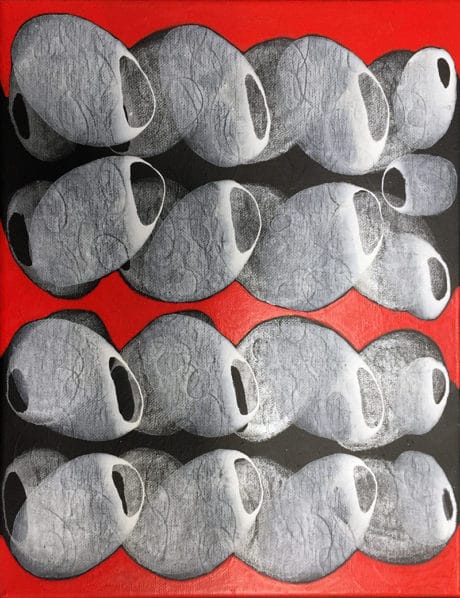 I left Smith. That was not so simple. That was very hard. I was there on a scholarship. I had my mother and father absolutely freaked out. Everybody thought I was going crazy, I guess. I finally said I would go to a girls’ college for art. I said I would stay in a dorm. I said I wanted to try it for six months. Actually, the truth was I couldn’t present a portfolio because I really didn’t know anything. I did do a portfolio but none of the really top-notched schools would take me. Moore did and I went in for a half year. My father said, “Well, if you’re going to do this crazy thing, you have to be able to make a living. We’ll start you on textile design.” I thought, “Make a living? Okay, I don’t care.” I just wanted to see.
I left Smith. That was not so simple. That was very hard. I was there on a scholarship. I had my mother and father absolutely freaked out. Everybody thought I was going crazy, I guess. I finally said I would go to a girls’ college for art. I said I would stay in a dorm. I said I wanted to try it for six months. Actually, the truth was I couldn’t present a portfolio because I really didn’t know anything. I did do a portfolio but none of the really top-notched schools would take me. Moore did and I went in for a half year. My father said, “Well, if you’re going to do this crazy thing, you have to be able to make a living. We’ll start you on textile design.” I thought, “Make a living? Okay, I don’t care.” I just wanted to see.
We had this very difficult course which was incredibly hard for me. We worked from ornaments and casts. They had to be exactly like the image shown. We did them in charcoal. We had to sharpen the charcoal to a little pinpoint and then we had to draw these things. I did it. I thought, I hope it’s better than this or that. But I did it. I was very fortunate that one of the beginning classes was taught by Leonard Nelson of Philadelphia. It was an introductory course, the very beginning course. It really started out with the basics. The other thing that I remember he did was that he took us all around the block of where we were. He said, “I just want you to really look around and see what’s there.” He said it in a way that made me realize I had never really looked before, and that was the difference.
I heard you were taught by Hans Hoffman?
My father was saying, “Well, if you are not going to do one of these practical things, no more money. You know you really have to be sure of what you want to do. You really need to study with somebody for the summer. I mean, you’re not really happy really until you get more.” So, he said, “You should go to study with Hans. I said, “Yes.” I was 19 then.
There were a lot of people who just went back to Hoffman summer after summer after summer. I remember Wolf Kahn was there. Although he was weird in class, he was gorgeous.
Class was very interesting. Hans had crit once a week. Somebody would pose as the model; I guess that’s what they were called. We all drew in charcoal. He would come around and look at what we had done. There was one pose for the whole week where you could move around. We all tried to get there early to get the position. I never got there too early because I had to work. I worked right next door and served breakfast and served lunch. Anyway, he’d come around to first look at my work. He added a couple of things. He would draw over your work.
What he did teach really taught me a lot. Really. It was all about this space around the model. Hoffman felt very strongly that if he drew the space around the model, the model would appear. So, anyway, I learned from the students. I learned from Hoffman’s predecessors. He would praise somebody. Then, all of the students would go around to see what it was about that piece of work that he really liked. That was another way of learning. Well, he liked a drawing of mine which drew everyone over. Of course, I didn’t know why he really liked it.
At the end of that session, I needed to know … did I have what it took? I said, “Could I have an appointment with you?” He was very sweet and agreed to the appointment in his house with his wife. I asked, “Will I be an artist?” He said, “How do I know?”
Then he said, “Just keep working. If you care about it and it’s what you want to do, it will happen.”
What did you do after your summer with Hans Hoffman?
What I was going to do was to be an artist. To heck with illustration and to anything else. That’s what I was going to do with my life. So, I go home and tell my daddy all that. He says, “You’ve got six months.” I thought, okay. I managed to survive the summer. I guess, I can survive, but I’ve got six months. My father insisted that I continued to take courses so I would graduate with a normal degree. The courses at that time were awful. So, there were two things I had always wanted to know: how to compose music and I really needed a logics class because I was doing the craziest thing in the world.
I walked in to logics class. I happened to notice some talented young guy who was bouncing around, pretty animated, prancing about and then he sat someplace else. Then, we divided the class. As I went through the doorway, he bumped into me and he said, “Excuse me.” Then, he sat next to me after we went to the second class. I had been at Hoffman’s all summer and was still wearing flip flops. He was kind of peering. He turns and look at my feet and said, “What’s wrong with your feet?” Those were the first words my husband said to me.
He asked me for a cup of coffee after. He asked me more questions about myself. That was so noble in the ‘50s. I cannot tell you how many dates I went on where I asked all the questions or I listened to the guy tell me how great he was. This was a reversal and he was asking me all these things. This was kind of fun. So then he took me home to the dorm and he didn’t grab me and he didn’t try to win me. I had two roommates. I went upstairs and I stood at the doorway and announced in a loud voice, “I just met the man I’m going to marry. Damn it.”
Very simple. I knew my whole life was suddenly there for him. I was not going to New York. All the plans were going to be changed. I mean there wasn’t much there to be changed, but I knew it would be changed.
Describe your work.
Basically, I discovered that the oval is my form. The oval, there’s no question about it. The egg comes before the chick. We had fun with that for a long time.
While the oval is repeated and repeated, it had something also to do with the fact that I was a sculptor for a long time. I wanted to make the ovals three-dimensional. I wanted them to have openings. I wanted these three-dimensional ovals with openings to have layers and layers all going in different directions. There was one painting that was just a central oval and everything exploding out which I call “Beginning.” I’m not quite sure what that was about. I do know that the other paintings that were at the Art Trust were the “Breathe In” and “Breathe Out.” That was the last thing that my husband did; it was all that he could do. It had something to do with that.
What’s your medium of choice?
The one that I’m working with now is acrylic, which I love. The drawings are on clay board which is a very fine surface and I use a very fine pen.
How did you come upon using the oval as a shape in your art?
Living a very long time, it may be natural to be looking for the essence of things. So, I think I discarded those shapes and forms that no longer seemed to be so important. I realized that process when I was drawing heads. They started out rather realistic and the ears will go off or the hair will grow long and then I did that with mouths and eyes. Eventually, they became all holes which could be, at that point, an oval. So, it always seemed to me that it became more abstracting, more and more to the essence.
So, this was transforming, it wasn’t just an “aha” moment of the oval when you saw it?
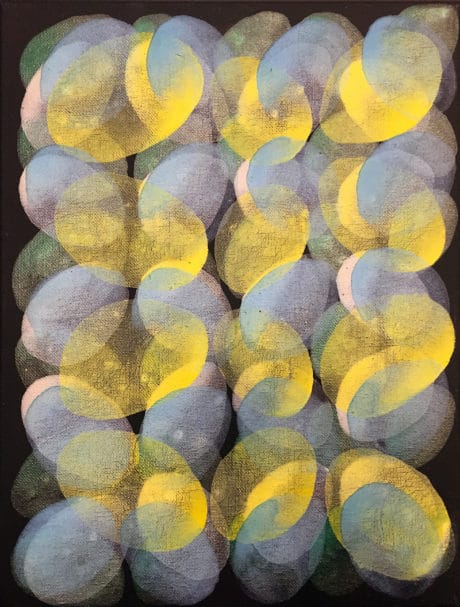 No, it was moving along, for the last 10–12 years. Let’s see, 1998, I think, the ovals were beginning to get more and more important.
No, it was moving along, for the last 10–12 years. Let’s see, 1998, I think, the ovals were beginning to get more and more important.
What are your thoughts on perfection?
I was saying that perfection may be complete. I have really thought about it a lot, about what is it that keeps me going and the fact that I’ll never get there. That’s the whole point. It’s infinite.
Do you most enjoy painting in black and white or color?
I love colors. I love color most. I always start out black and white. I think black and white is the most integral thing. You’re stripping away the color and everybody loves color. You get down to bare bones, it’s black and white. Forms are very important. So, when I start out, I usually start out in series of shades of black and white and then slowly move into metallics and very subtle changes and then eventually all different colors. I love colors.
How do you know when a piece of artwork is done?
That’s an interesting question because there are some that are done just like that. There are others that age and age and age. I guess, that’s when the painter in me says “I’ve got nothing more to say.”
Who has been the biggest influence in your life?
Strangely enough, Leonard Nelson. He taught me how important it was to find out what one should do on this earth and then follow it. He taught me by example about the way he lived his life. He sent me to Hans Hoffman, which was wonderful and fun.
What inspires you?
My husband and I traveled a great deal. We went all over the world, but we ended up going back to certain places. We went to Maui every winter. We went to Hilton Head in the spring. We went to Maine in the fall. Every place I took pictures of things that I found interesting and they were so overwhelming that it knocked my socks off.
What were these things?
Waves, when they went back into the ocean, they left patterns in the sand. Any kind of root, any kind of growing plant, volcanoes … I mean, you name it. I have photographs and photographs of the things that inspire me and I would bring them home and show them to people. Now, I did not photograph all the gorgeous women in bikinis on the beaches. I didn’t photograph the muscular men either. Most of these things were landscape types of things. But that wasn’t the stuff that interested me when I went into the studio. When I went to the studio, I would want to empty out. I wanted to get rid of the daily mess. Get rid of the shopping list, get rid of the bills to be paid. Get rid of the whatever and just look at the piece of artwork I was working on and try to get to that space where it is. That’s the best stuff in there.
[If great conversation and wonderful food go hand-in-hand, Margo and I had come to the crossroads. Twelves is situated in a bank in the lower part of Chester County. Not to be redundant, but on a scale of 1 to 10, I’d rate it a 12. The whole “local food” craze can be overused, but this place is local and honest. The menu praises local veggies and meat but not in a pretentious way.
The waitress handed us our menus and said, “Take a look then I’ll come back and tell you about our specials and you can change your mind.” She was right. The way she described the local mushroom soup, I thought it would be served in a chalice. It should have been. The soup was outrageous. When served it had a lump of crabmeat nestled on top; by the time I took my first bite some of it had sank to the bottom for a nice surprise as a final bite. Let’s not forget the hint of the truffle oil that started with the first bite and ended with the last.
Margo’s grilled salmon wrap arrived with a generous side of housemade kettle chips. The waitress noticed my stare and graciously gave me a small bowl of golden crispy chips for my own delight. I ordered the Twelves burger, crafted of a bovine locally born and raised in Cochranville and covered with local cheddar cheese and some strips of bacon. I bit in without sympathy.]
What are you eating right now?
Grilled salmon. It’s a wrap. The best thing is their potato chips, which they do themselves.
What’s your favorite food?
I’m a vegetarian but I love fish.
When did you move into the area?
I wish I could remember. I can’t tell you exactly, 1970s. The women here are more fun. I was in Detroit.
What does home mean to you?
Place where I’m comfortable and can be myself.
Your proudest moment? It isn’t about art.
When I was a little kid, I used to sing all the time. Then, I went to first grade and my idea of singing was to wake up in the morning and just start singing and I would sing about what I had for breakfast, what I see at the window. I just made up the words, and I made up the tune. When I got to first grade, the teacher asked, “Who would like to sing a song?” I raised my hand. The teacher said, “Alright, Margo, go ahead and sing.” So, of course, I started to sing what I had for breakfast, what I saw out the window and of course I made it all out of my head, very enthusiastically. I heard a little giggling behind me. I wasn’t paying attention to it because I was singing my song. Obviously, the teacher heard it. She didn’t know what to do about it. She told me to sit down. What she did was truly cruel.
From that point on, I was scared to death to get in front of anybody and do anything. I was terrified because people would giggle and I would be embarrassed by all the people who laughed. It took years to get over that. The one thing that made me get over it was to go and take singing lessons. I did that when I was 55. I took it very seriously. I learned all kinds of stuff. Then, at the same time, I was getting involved in yoga and there was a guru from Wilmington who came to my yoga class. We’re all sitting there. My husband was sitting next to me and this guru, very intently, said, “Somebody sing a song.” My husband would have normally, he was a professionally trained singer. Everybody knew who he was, he was Washboard Bill. I thought that was great. All of a sudden, he’s quiet and he pointed to me.
So, the guru looks at me and said, “Sing!” I’ll never forget it. I started to sing and what went through my head was if anybody giggles this time, I will kill them. Nobody giggled and nobody laughed. So, that was probably the proudest moment.
What was one thing someone was right about?
It was my brother. He looked at Bill [Margo’s late husband] and myself and said, “You deserve each other.”
Money is okay but it isn’t everything. What is life about?
Finding out why you’re here and then doing it until you’re not here.
What’s the last book you read?
I just dumped it in the library. I don’t remember the name of it. Apple. Something about mortality. I’m reading books about dying.
What do you collect?
Earrings. I have collected a lot of things over the years things that I never figured out why. I was fascinated by cameos, I have a lot of those. I love and collect amber. I just love the fact that all that stuff is in amber. I have amber with bones and amber with pieces of this and that. So, yes, I collect.
When people first meet you, you are afraid they would think …
I’m too big.
A smell that reminds you of your childhood?
Cow’s shit. I’m sorry.
First big break?
Oh, well, I don’t know if it was a break. I won a National Prize for a wood carving and that just thrilled me. I was 25 years old.
Do you remember your first piece of artwork you sold?
I want to make sure I got the right one. Philadelphia Museum of Art. When I was 25 I won a prize and it went to the Philadelphia Museum. It was a purchase prize award.
At this point the waitress was setting tables for the dinner crowd. Considering Twelves offers a $25 prix fixe menu Monday through Thursday, I wanted to stay, but we had to go. We drove back to Margo’s studio and I thought about all the questions I never asked my grandmother. The trip back was a wonderful opportunity for me to relish in her passion and reflect on her vision as she described it passing through the years.
I don’t mean to sound trite, but I left the interview humbled, inspired and excited to paint. Margo, on the other hand, was excited that the bottle of wine we finished at Twelves had cured her arthritis, and she couldn’t wait to get to her studio, where we finished up our interview with a round of speed questions:
Twelves Grill & Cafe is located at 10 Exchange Place in West Grove; phone: (610) 869-4020
- Photography: Jeff Schaller
